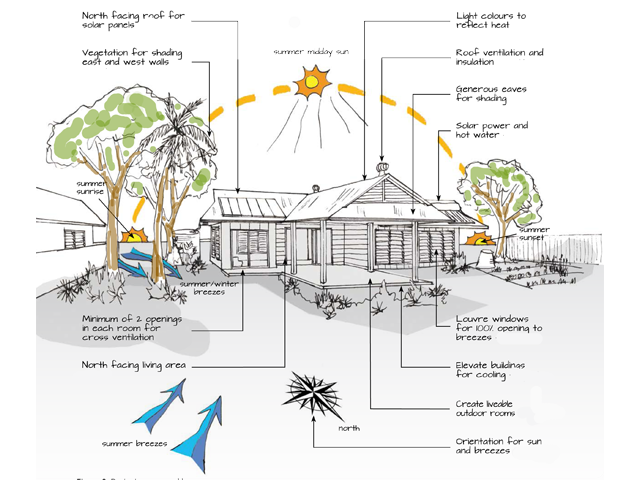
LANDSCAPING DESIGN FOR YOUR NEW NORTH QUEENSLAND HOME


Develop a concept garden plan to complement your home design.
A well designed garden can shade your home and filter breezes into outdoor areas. It also helps create a great place to spend time with the family. Native planting can bring in wildlife and increase biodiversity. You can also use your backyard to grow fresh fruit and vegetables.
Landscaping For A Cool Home
- Strategically planted vegetation can filter breezes or direct them in to your home. Make sure that you do not plant dense vegetation that can block breezes.
- Large shade trees can protect your home in summer by shading roofs and walls. Consider planting trees to the east, west and south sides of your home to shade walls.
- In the absence of large shade trees, trellises can provide an immediate and long term shading solution and a place to grow your favourite climbers and creepers.
- Avoid large trees to the north if you are planning on installing solar panels as any shading, even on one panel, can potentially compromise the output of the whole system.
- Using softer surfaces such as grass, pebbles and garden beds will encourage on site water infiltration, reduce heat build-up and create a great tropical environment.
- Mulch garden beds to reduce the need for watering.
- Select hardy species of grass that require less water.
- Planting native vegetation will reduce demand for water and bring in the native wildlife. Native flowering plants can feed adult butterflies and attract birds. Try planting host plants to encourage butterflies including Aristolochia tagala for the Cairns Birdwing or Melicope elleryana and Melicope rubra for the Ulysses butterfly.
- Plan for a veggie garden to provide the family with nutritious fresh food. This should be carefully located to receive good sun and shelter from wind, while being close to the kitchen.
- Ensure you leave a gap between garden vegetation and your house to allow inspection for termites.
Rainwater Tanks
- Install a rainwater tank to water the garden or fill the pool.
- Consider raising your tank or putting it on a hill to use gravity rather than a pump to circulate water.
- Rainwater tanks can be plumbed into the house for use in the laundry and for toilet flushing.
Swimming Pools
Good pool design can save lots of money on operating costs by reducing electricity, water and chemical use.
- Installing an energy efficient pool pump, or retrofitting a pump controller, to give variable speed pumping can save 60-70% on your pool pump running costs. This will also make your pump quieter.
- Choose the most appropriate electricity tariff for your pool pump. Off-peak tariffs are generally considered the best option due to reduced electricity costs. However, if you have a recently installed solar power system you may benefit by having your pool on the daytime tariff which enables you to use your own solar power to run your pump.
- Shade your pool to reduce water evaporation and reduce the sun’s impact on pool chemicals.
- Use a pool cover when the pool is not in use to reduce evaporation of water and chemicals while also keeping your pool clean.
- Consider a chemical free naturally filtered pool. This can reduce operating costs by 80% while providing a healthy and natural swimming environment. These cost more to install but the savings in electricity and chemicals can pay off the investment within a few years. This type of filtration can also be retrofitted to existing pools. Talk to your local supplier about your options.
- Careful positioning of your pool can also help to cool your home.
These are just some of the lanscaping ideas you can bring to your new cool home design and construction. Proper planning and investment can save you and the environment in the medium to long term.
Read part 2: Energy Savers For North Queensland Home Building